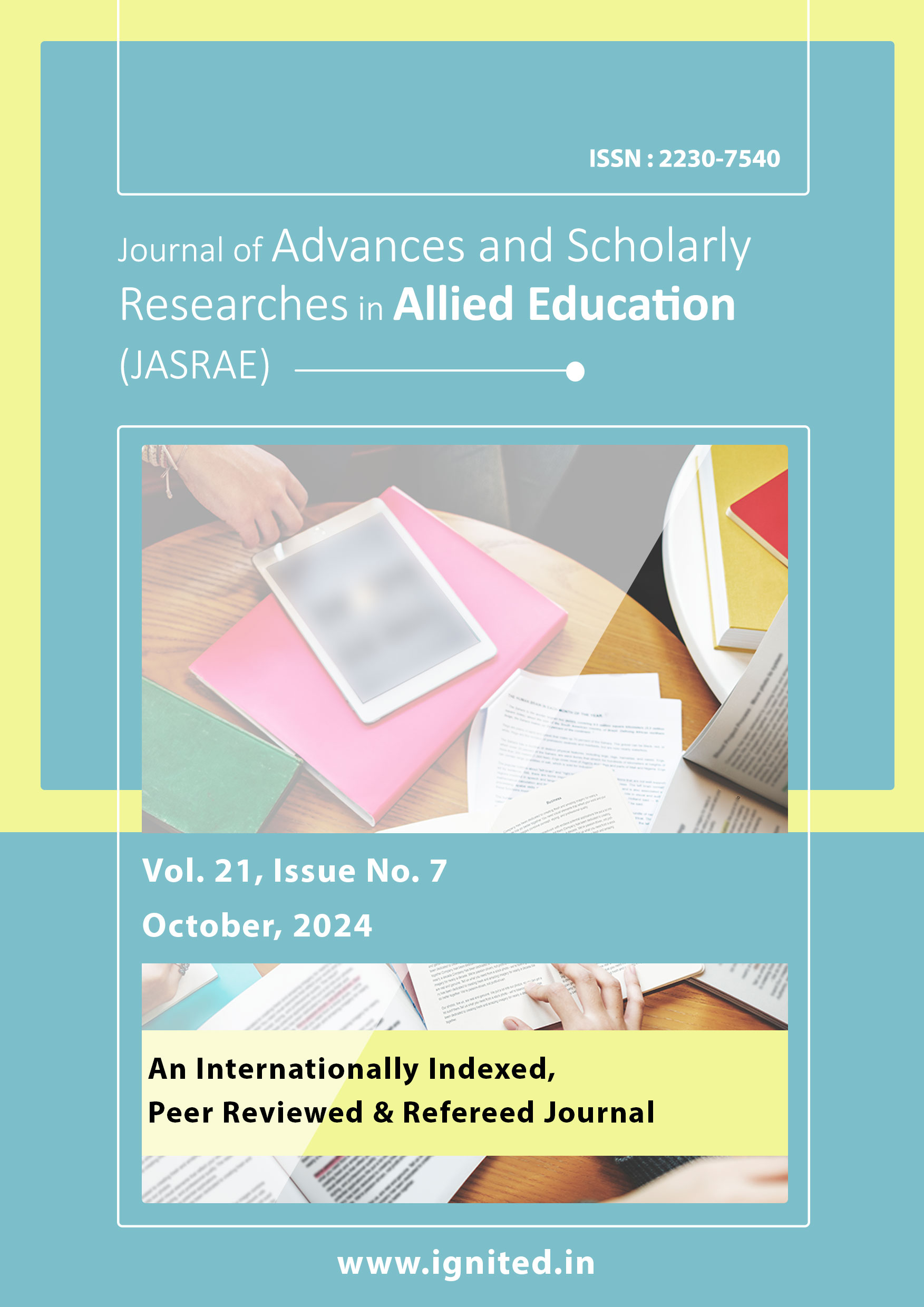Broad Spectrum Fungicidal activity of a novel series of Synthesised Fused Five-and Six- Membered Heterocyclic ring of 5,5 -Dihydrothiadiazolo- [3, 2-A]- [1,3,5]-Triazin-5-Ones
DOI:
https://doi.org/10.29070/18z3ed56Keywords:
Heterocyclic compounds, Fungicidal activity, Broad-spectrum antifungal, Structure-activity relationship (SAR), Triazine derivativesAbstract
Heterocyclic scaffolds maintain their structural variety and bioactivity, which is encouraging in the continuous search for powerful antifungal medicines. Based on the 5,5-dihydrothiadiazolo-[3,2-a]- [1,3,5]-triazin-5-one core structure, this paper introduces a new series of fused five- and six-membered heterocyclic compounds and details their design, synthesis, and biological assessment. The suggested molecular frameworks were validated by characterizing the produced compounds using conventional spectroscopic methods, such as infrared, nuclear magnetic resonance, and mass spectrometry. A battery of phytopathogenic and clinically significant fungal species, including Aspergillus niger, Candida albicans, Fusarium oxysporum, and Trichophyton rubrum, were subjected to an extensive in vitro fungicidal screening. The findings showed that some compounds have broad-spectrum fungicidal action, with minimum inhibitory concentrations (MICs) that were on par with or higher than those of conventional antifungal medications. Investigations into the structure-activity relationship (SAR) showed that the antifungal effectiveness was improved by adding electron-withdrawing substituents to the triazine portion. These results show that 5,5-dihydrothiadiazolo-[3,2-a]-[1,3,5]-triazin-5-ones are a good starting point for developing novel broad-spectrum fungicides that are both effective and safe to use.
References
Swamy, S. N., Priya, B., Prabhuswamy, B., Doreswamy, B., Prasad, J. S., Rangappa, K. S., et al. (2006). Synthesis of pharmaceutically important condensed heterocyclic 4, 6-disubstituted-1, 2, 4-triazolo-1, 3, 4-thiadiazole derivatives as antimicrobials. European journal of medicinal chemistry, 41(4), 531–538.
Prouillac, C., Vicendo, P., Garrigues, J.-C., Poteau, R., & Rima, G. (2009). Evaluation of new thiadiazoles and benzothiazoles as potential radioprotectors: Free radical scavenging activity in vitro and theoretical studies (qsar, dft). Free Radical Biology and Medicine, 46(8), 1139–1148.
Taylor, R. D., MacCoss, M., & Lawson, A. D. (2014). Rings in drugs: Miniperspective. Journal of medicinal chemistry, 57(14), 5845–5859.
Sharma, R., Yadav, R. K., Sharma, R., Sahu, N. K., Jain, M., & Chaudhary, S. (2021). Recent advancements in the synthesis and chemistry of benzo-fused nitrogenand oxygen-based bioactive heterocycles. Current Topics in Medicinal Chemistry, 21(17), 1538–1571.
Potts, K. (1961). The chemistry of 1, 2, 4-triazoles. Chemical reviews, 61(2), 87–127.
Pozharskii, A. F., Soldatenkov, A. T., & Katritzky, A. R. (2011). Heterocycles in life and society: An introduction to heterocyclic chemistry, biochemistry and applications. John Wiley & Sons.
Tao, J., Wang, D.-Z., & Cao, L.-H. (2007). Synthesis of 5-(6-pyridazinone-3-yl)-2- glycosylamino-1, 3, 4-oxadiazoles. Journal of the Chinese Chemical Society, 54(5), 1287–1292.
Mirzaei, J., Siavoshi, F., Emami, S., Safari, F., Khoshayand, M. R., Shafiee, A., & Foroumadi, A. (2008). Synthesis and in vitro anti-helicobacter pylori activity of n-[5-(5-nitro-2-heteroaryl)-1, 3, 4-thiadiazol-2-yl] thiomorpholines and related compounds. European journal of medicinal chemistry, 43(8), 1575–1580.
Mathew, V., Keshavayya, J., Vaidya, V., & Giles, D. (2007). Studies on synthesis and pharmacological activities of 3, 6-disubstituted-1, 2, 4-triazolo [3, 4-b]-1, 3, 4- thiadiazoles and their dihydro analogues. European journal of medicinal chemistry, 42(6), 823–840.
Leonard, K. J., & Szabo, L. J. (2005). Stem rust of small grains and grasses caused by puccinia graminis. Molecular plant pathology, 6(2), 99–111.
Ilango, K., & Valentina, P. (2010). Facile synthesis and cytotoxic activity of 3, 6- disubstituted 1, 2, 4-triazolo-[3, 4-b]-1, 3, 4-thiadiazoles. European Journal of Chemistry, 1(1), 50–53.
Husain, A., Asif, M., Bhutani, R., & Dutta, M. (2013). Triazolothiadiazoles as antimicrobial agent: A short riview. World Journal of Pharmaceutical Sciences, 1(4), 138–150.
Tao, J., Wang, D.-Z., & Cao, L.-H. (2010). Synthesis of 5-(6-pyridazinone-3-yl)-2- glycosylamino-1, 3, 4-thiadiazoles. Journal of the Chinese Chemical Society, 57(5A), 1077–1080.
Hafez, H., Hegab, M., Ahmed-Farag, I., & El-Gazzar, A. (2008). A facile regioselective synthesis of novel spiro-thioxanthene and spiro-xanthene-9′ , 2-[1, 3, 4] thiadiazole derivatives as potential analgesic and anti-inflammatory agents. Bioorganic & medicinal chemistry letters, 18(16), 4538–4543.
Holm, S. C., & Straub, B. F. (2011). Synthesis of n-substituted 1, 2, 4-triazoles. a review. Organic Preparations and Procedures International, 43(4), 319–347.











